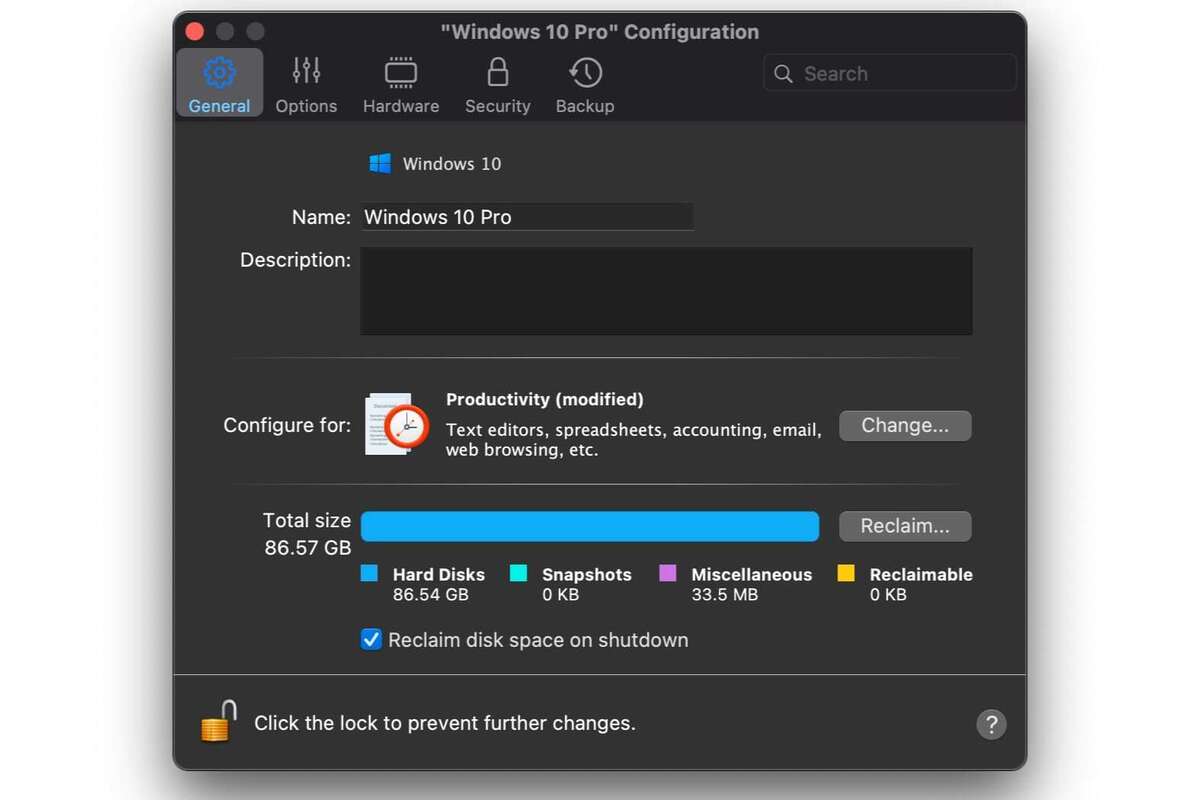

- #PARALLELS FOR MAC HARD DRIVE SPACE HOW TO#
- #PARALLELS FOR MAC HARD DRIVE SPACE MAC OSX#
- #PARALLELS FOR MAC HARD DRIVE SPACE INSTALL#
If you want to move an existing VM to a new location: This location can be changed while creating the VM if you select the Customize settings before installation option. Yes! By default, your VM (.pvm file) resides in the Documents/Parallels folder in your user folder, or in /Users/Shared/Parallels. That being said, what if your Mac is low on free disk space, but you still want to add a Parallels Desktop virtual machine (VM) for occasional use? Is it possible to change the location of the VM and keep it elsewhere -for example, on the external storage drive? As a result, the built-in hard drive capacity is often not enough to store all the applications and files we want. With the rising trend of cloud storage, computer users are seeing a gradual increase in file size for…everything! Would you have imagined holding a 1 TB thumb drive 10 years ago? Not only is it available nowadays, but you can get it at a reasonable price!At the same time, computer manufacturers don’t seem to keep up with these changes. Guest Parallels support staff author: Sasti Kumar Velupillai Muniappan Running a Parallels Desktop virtual machine from an external drive (yes, for real!)

Otherwise, hit the drop down menu, and select ‘Choose an image file’, and locate it through Finder as per usual.
#PARALLELS FOR MAC HARD DRIVE SPACE MAC OSX#
#PARALLELS FOR MAC HARD DRIVE SPACE INSTALL#

#PARALLELS FOR MAC HARD DRIVE SPACE HOW TO#
How To Instal Sql To Parallels For Mac On A Drive.How To Instal Sql To Parallels For Mac On A Hard Drive.As for your memory situation: I run Parallels on a MacBook with 4GB or RAM. Keep in mind that this takes a fair amount of hard drive space, so be sure you've got the space to spare. Yes, you can install Parallels on your Mac in addition to Boot Camp. I want to run Windows XP on my Mac to use just Internet Explorer (to use. If not for this problem I'm sure I'd have at least 20 GB of free space by now.Here's my problem, please help me fix this: I have an 80GB, 1G RAM MacBook. I am at my wit's end and have already deleted as many other video and photo files as I can to free up space. Restarting does not restore the missing hard drive space.

It's gotten to the point where I can no longer open the large file at all the computer is telling me the file is damaged. Showing hidden files did not reveal anything. I do not know how to find the files that are clearly being created so I can delete them. I started with 10+ GB of free space, now I'm down to under 2 and keep getting error messages from the computer telling me that my hard disk is almost full. I am working with a large MS Word file (currently it's nearly 1 GB big) and every time I use the file or open it in preview, my computer freezes, slows down, and the amount of hard drive space being used rapidly decreases.


 0 kommentar(er)
0 kommentar(er)
